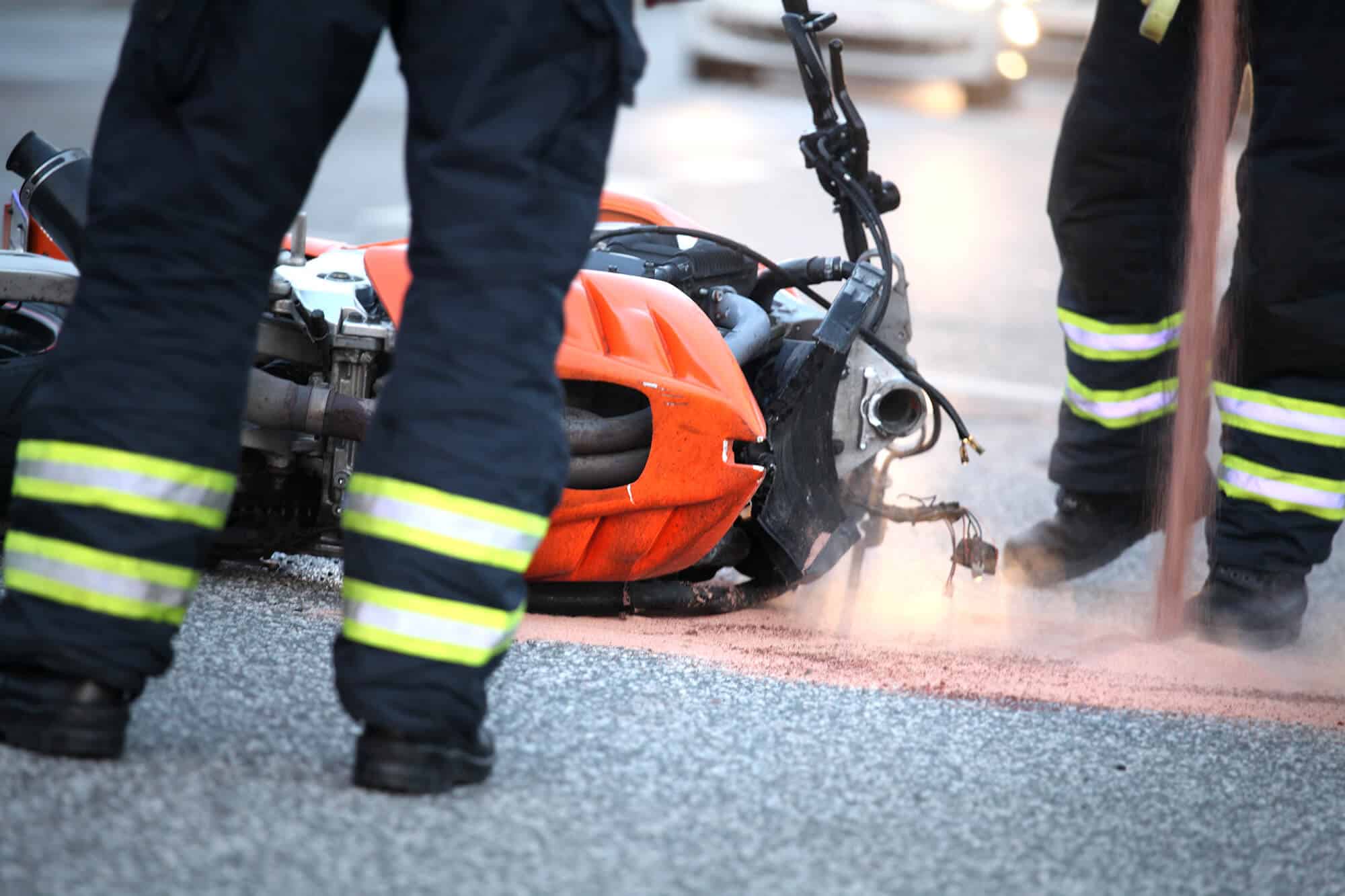Almost 5,000 people were killed nationwide in 2018 as a result of motorcycle accidents, according to the National Highway Traffic Safety Administration (NHTSA). New York accounted for 149 of those fatalities.(1) (2)
The New York City Motorcycle Safety Study says, “From 2010 to 2014, motorcyclists accounted for 14 percent of traffic fatalities in New York City, but represent two percent of registered motor vehicles.” Those numbers have not come down for New York City as much as with other modes of transportation. Even more concerning, New York City’s motorcyclist fatality rate is nearly twice that of the rest of the state and is “significantly higher than the national rate.”(3)
Such are the sobering statistics for motorcyclists who ride because of the sense of freedom and opportunities for companionship it offers.
In an accident with another vehicle, motorcyclists are vulnerable because they are out in the open, completely exposed. They lack the added protection afforded in larger vehicles which surrounds occupants with reinforced sides, roofs, doors, and airbags. Even the weight of the larger vehicles adds protection.(4)
Anyone on a bicycle or on foot and hit by a motorcycle is even more vulnerable.
This exposure leads to even more grim statistics.
Grim Statistics
The Governors Highway Safety Association (GHSA) reports the motorcycle fatalities rate is 28 times higher than the rate for passenger vehicles, based on miles traveled.(5)
And according to The Insurance Institute for Highway Safety (IIHS), 63% of motorcyclist deaths in 2018 resulted from multiple-vehicle crashes.(6)
The Insurance Information Institute (III) gives one possible explanation for these death statistics, “Operating a motorcycle requires a different combination of physical and mental skills than those used in driving four-wheel vehicles.”(7)
But death rates are not the only concern. A U.S. Department of Transportation Quick Facts sheet lists the number of injured on motorcycles was 88,000 for 2015.(8)
So, even if a crash does not result in a fatality, you may be seriously injured and require extensive medical care with lengthy recovery times.
A knowledgeable attorney can help you navigate the medical and financial challenges you face due to the crash.
When accidents happen, motorcycle crash victims and their families need strong legal representation from attorneys with years of success, such as the personal injury team at Weitz & Luxenberg. We understand the complex problems of a motorcycle accident.
Common Causes of Motorcycle Accidents
Motorcycle accidents often involve a motorcyclist being hit by another vehicle, such as a car. It can mean a motorcyclist hitting another vehicle or a pedestrian.
Regardless, motorcycle accidents can be traced to:
- Age.
- Alcohol.
- Driving records.
- Drug use.
- Engine size.
- Failure to appreciate the capabilities and limitations of a motorcycle.
- Improper licensing.
- Inadequate operator training.
- Lack of alertness.
- Making left turns.
- Speed.
- Sudden Stops.
- Visibility.
- Weather.(9) (10)
NHTSA says, “More than 80 percent of all reported motorcycle crashes result in injury or death to the motorcyclist.”(11)
Head and Other Common Injuries
Injuries from motorcycle accidents can range from minor to severe. They can be disabling or lethal. Common sense suggests those injuries might include abrasions, burns, fractures, neck, spinal cord, and head injuries, such as traumatic brain injury.
“If you’re ever in a serious motorcycle crash, the best hope you have for protecting your brain is a motorcycle helmet,” advises NHTSA.(12)
NHTSA explains, “Ejection from the motorcycle is a common injury pathway. If a motorcycle comes to a sudden stop and the rider is ejected from the motorcycle, the rider will forcibly strike objects in the path as well as the ground.”(13)
Because the most common injury sustained in fatal motorcycle crashes is head injuries, helmet use is vital. To have the fullest protection possible, motorcyclists should use helmets that meet federal safety standards which take into account such things as absorption of force and allow for the safest amount of peripheral vision. Sadly, many do not. (14) (15)
In a motorcycle safety fact sheet NHTSA says helmets can be up to 37% effective for preventing motorcycle rider fatal injuries.(16) It also estimates, “helmets saved the lives of 1,872 motorcyclists in 2017.”(17)
NHTSA also notes that for New York state the number of lives saved by the use of helmets was 80.(18)
If a motorcyclist is injured in a crash while wearing a helmet, it could be grounds for a lawsuit if the helmet is defective. A knowledgeable attorney can help you evaluate your legal options.
Weitz & Luxenberg Wins Verdicts & Settlements
If you or a loved one has been injured or killed in a motorcycle crash, you should examine your legal options.
Weitz & Luxenberg is a national law firm recognized for its involvement in helping thousands of clients with their personal injury cases. From insurance settlements to jury awards, we are New York’s largest personal injury litigations firm.
W&L has one of the most experienced and effective personal injury teams in the country. Our attorneys are ready to evaluate your case and represent your interests. We have a track record of success. Here are just two examples:
W&L achieved a major $20.5 million verdict— with an additional $3 million in past and future medical expenses— for a victim of a hit-and-run car accident that left him paralyzed for life.
Attorneys at W&L secured a $1.4 million settlement for a woman who was struck by an ambulance in downtown Manhattan.
